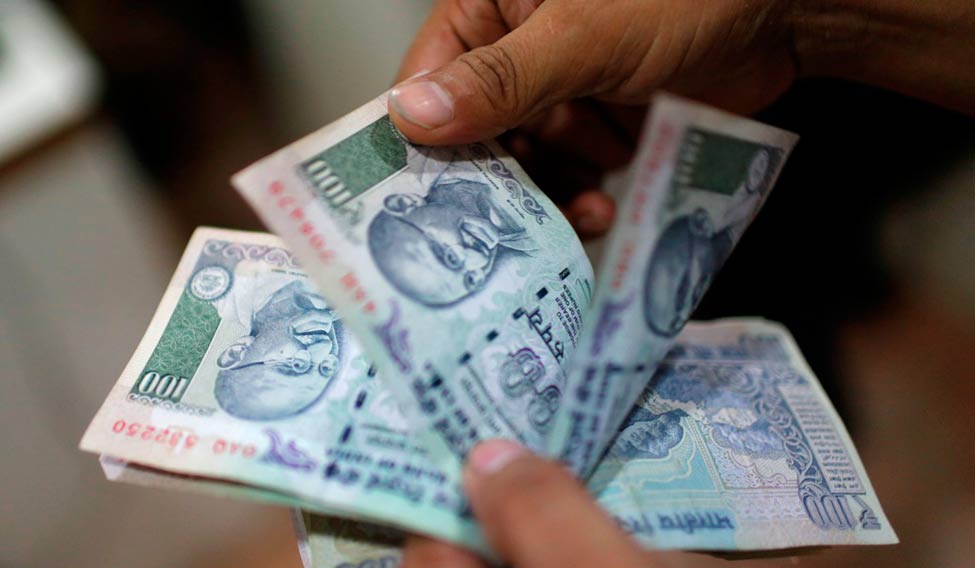Buoyed by stunning growth of exchange-traded fund (ETF) industry and dazzling success of central public sector enterprises (CPSE) ETF, the government has announced a much bigger, better and well diversified ETF called Bharat 22. The said ETF will have 22 companies from six sectors such as basic materials, energies, finances and banking, FMCG, industrial and utilities.
In a bid to make broader and diversified basket, the government has imposed a 15 per cent cap on each stock and sectoral cap of 22 per cent. Moreover, the government has included three blue chip companies and offering of stakes of these to make it more appealing to the investors. The governemtn aims to mop up Rs 72,500 crore in the current fiscal and expects Rs 42,500 crore to be raised from minority stake sales and ETFs. So far, the government has raised Rs 8,500 crore. The government may also plan much larger offering in multiple trenches. CPCE was first offered in March and thereafter offered in two trenches. Timing of Bharat 22 and size of offering is yet to be decided. The fund will be managed by ICICI prudential. Since it's also an index, it will open a tons of opportunities for private ETF players to develop similar and complex products suitable to investors needs.
What is ETF?
Exchange traded funds (ETF) are akin to mutual funds but with defined asset basket like shares of an index. They are more liquid compare to mutual funds as they are traded on stock exchanges. The value of units of ETF depends on the value of assets held by the ETF. First such ETF—PSU ETF—was launched in March 2014 and it had mopped up Rs 3,000 crore. In a subsequent two trenches in current fiscal, CPCE has mopped up Rs 8,500 crore. It has constituents of 10 PSU companies. CPSE has given 18 per cent return in current year. Since its inception in March 2014, CPSE gained around 43 per cent in last year, almost double when compared to sensex.
Bharat 22
The new ETF—Bharat 22—will be larger, broader and diversified. Bharat 22 ETF will have 22 constituents compared to 10 constituents in CPSE. The government has included offering of some blue chip companies like Axis bank, Larson and Toubro and ITC through its investment arm STUTI. The STUTI holding in the above mentioned companies is Rs 50,000 crore and inclusion of these private companies share will boost Bharat 22's investment appeal and if it succeeds, the government may design more balanced fund, having broader mix of PSU and public enterprises.
Bharat 22 ETF |
||
NO. |
Company |
Weight |
1 |
Larsen & Tourbro Through SUUTI |
17.1% |
2 |
ITC Ltd Through SUUTI |
15.2% |
3 |
SBI (State Bank of India) |
8.6% |
4 |
Power Grid Corp Of India |
7.9% |
5 |
Axis Bank Through SUUTI |
7.7% |
6 |
NTPC Ltd. |
6.7% |
7 |
ONGC Ltd. |
5.3% |
8 |
Indian Oil Corp |
4.4% |
9 |
BPCL Ltd. |
4.4% |
10 |
NALCO |
4.4% |
11 |
GAIL Ltd. |
3.7% |
12 |
Coal India Ltd. |
3.3% |
13 |
BEL Ltd. |
3.3% |
14 |
Engineers India Ltd. |
1.5% |
15 |
Bank Of Baroda |
1.4% |
16 |
REC Ltd. (Rural Electrification Corp) |
1.3% |
17 |
NHPC Ltd. |
1.2% |
18 |
PFC Ltd.( Power Finance Corp) |
1.0% |
19 |
NBCC Ltd. |
0.6% |
20 |
NLC India Ltd. |
0.3% |
21 |
Indian Bank |
0.2% |
22 |
SJVN Ltd. |
0.2% |
Indian ETF industry
Indian ETF market is second fastest growing market in Asia. Industry size doubled to near 4 billion in just 3 years. Thanks to aggressive marketing and information asymmetry, mutual funds remain sole investment avenues for the retail and HNI class. ETF is a late entrant, but it has witnessed drastic growth.
ETF enjoys an edge over mutual funds due to its flexibility to customise and offer target specific and asset specific funds. Global ETF industry is estimated at 4 trillion market and has shown excellent growth during the last few years. There are approximately 4000 plus ETFs and covers almost entire alternative universe ranging from currency to bond to commodity to country. Unlike mutual funds, ETF offers leverage as well. Some ETF offers pseudo short selling facility which are known as an inverse ETF. For instance, ABC 3x gold bull inverse ETF value moves three times compared to underlying asset, i.e. gold. This type of ETF offers leverage and short or long bet as well.
Indian stock market is booming. It has just entered the two trillion club. Household wealth is rising. Investors base has just started to expand. contemporary investor is smart and wealth savvy. The investor needs more products to park his or her hard earned money. HNI and super HNI having vast wealth have their own share of problems. Unlike western markets, hedge funds are still not available. Stock market is booming but still not able to attract those small investors who left market in 2005-2008 mayhem. Moreover, equity derivatives become capital intensive and highly leverage instrument and not suitable for small investor. ETF can fill this vacuum. This is just beginning. Developed world has 4,000 plus ETF. India has just few active ETF. With right design, right kind of awareness, ETF can outgrow any other asset class, sky is the limit.
(The writerr is CEO of Paradigm Commodity Advisors, a research boutique which provides strategic consulting and thematic research on major markets)





